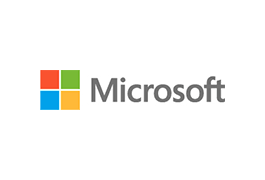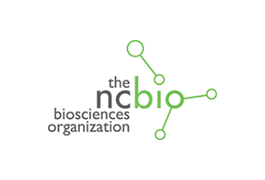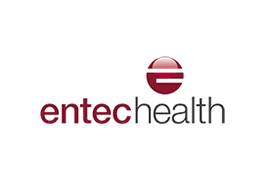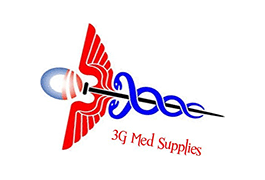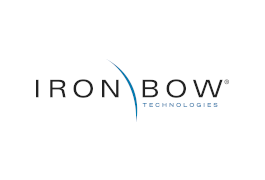6 December, 2024
A ‘Scan’ Back to the Early Days
Little-known in the rich history of New Zealand innovation is that the medical imaging technique now known as CT (Computed Tomography) was invented in Christchurch by Prof. Richard Bates and Terry Peters, his doctoral student at the time. Unfortunately, from the viewpoint of New Zealand’s global recognition, Sir Godfrey Hounsfield also independently invented CT and was a few months ahead of the Christchurch team. Hounsfield published first and subsequently was awarded a Nobel prize.
Richard’s legacy was not put to waste though and he had a profound impact on ARANZ Medical with numerous graduates, or graduates of graduates, founding and further expanding the activities of the company.
A couple of his protegee’s, Rick Fright and Bruce McCallum, were spending some time overseas (University College London and Cambridge University respectively); And as many great ideas begin, it was while having a beer, in this case in Hyde Park, that the concept for the technological innovations that established ARANZ (Applied Research Associates NZ Limited) began.
Big Ideas Led to Successful Technological Innovation
“Remember that crazy idea we had over too many beers, maybe we should try and build one.” The small team turned their ideas into reality, with a handheld laser scanner that captured surface information and converted it into data.
The scanner knows at all times exactly where it is in relationship to the object that is being scanned. This information is transmitted to the imaging software that instantly joins the pieces into a single, exact three-dimensional replica of the object being scanned.

It was really the genesis of everything that ARANZ Medical is now doing in the wound care space. But the path to that had a few interesting twists and turns.
An early test unit was purchased by a local governmental research agency (CRI) in 1998, after we sent Bruce to Hamilton to scan sheep and beef carcasses in meat freezers. As a vegetarian, scanning meat carcasses wasn’t Bruce’s favourite application … “should have got danger money for that”. And hence the reason why the scanner was known in some quarters as “The Meat Scanner”.
However, prior to this we had already done some scanning for another innovative NZ company, a small special effects company in Wellington. With that connection, a far more salubrious name for our early scanner could have been “Scanner of MiddleEarth” (or Lord of the Scanners)!
Hollywood to Healthcare
That small special effects company that we worked with was Wētā. We initially approached Wētā in 1996 with a bit of fiberglass which included a laser powered off a 9V battery, and asked ‘Imagine scanning your face like this and a 3D model appeared, would that be useful?’ – Matt Aiken, digital effects supervisor, thought so … but told us to come back when we had something going … So, we got something going!
We went back in 1997 with a working prototype. “Perfect” said Matt, “we’ve got a little model here that we would like you to scan. It’s a model with regards to a secret project…”. This ‘little’ model turned out to be several metres long. This ‘little model’ was none other than a 1:144 scale replica of Helms Deep, the first miniature ever built for Lord of the Rings by Wētā. Our scanner had been designed for something the size of a head and the software didn’t cope too well with Helms Deep. No problem, we went away, sorted that out, and returned to successfully scan.
They purchased a prototype which was instrumental in helping Wētā Studios to make Lord of the Rings. The first step involved a detailed Clay maquette sculpted by artists at Wētā Workshop. Traditionally, the digital modelers would have modelled the creature by eye, with reference to a sculpture or photograph, resulting in a rough computer graphic approximation. One of the problems with this sort of approach to visual effects is that it’s too easy to change things, and to alter someone else’s designs.
Using our FastSCAN, however, allowed for very tight control over the art direction. It transformed their ability to convert the models into 3D computer graphics and the resulting groundbreaking animations that brought Gollum and many of his fellow Lord of the Rings cast to life.

Hollywood picked up the technology and FastSCAN scanning included Will Smith for Men in Black II, Harry Potter III, and even archiving Lucasfilm artefacts. In Men in Black the scanner was put to use for not just scanning models, but people as well. Will Smith was scanned to create a Computer Graphics version of him to use for example, when he is in a distant ‘hoverpod’ and his features can’t be made out. Using the scanned model they can edit them in.
Hollywood glamour aside, we looked for other uses where we could apply our technology.
Our Scanning Technology Joins the Medical Community
There were many applications for our scanning technology including Smithsonian artifacts, canoe and helmet prototypes, fossils, radiotherapy masks, and wig cap creation. But a key part of our business at that time was the transformation of prosthetic fabrication with 3D digital scanning for simple and accurate custom fit. We collaborated with Hanger Prosthetics and Orthotics Inc. to create a version of FastSCAN called Insignia and really change how orthotics and prosthetics were made, to enable accurate custom fitting.
Previously if you wanted a new artificial limb you would go to a clinic for a plaster-of-paris negative mold of your limb. It would then take a few days to make a test fit of molded plastic. At this stage they would get you back and once that was fitted they would make the real socket. It was a real challenge for the patient who would need to come in and out of the clinic over several days. With our Insignia scanner it could all be done in a day. They would scan the residual limb, send that scan to mill and it was then ready to go, pretty much in a few hours.

Another customer of ours, Wake Forest University, were using our scanner to create cranial helmets. This saved having a plaster cast made, so the whole procedure was so much less invasive, as well as faster and accurate. Wake Forest University were also very much into wound care and had a patent for negative pressure wound therapy (The VAC). Although many more players eventually entered that market, they had the only one for many years. They needed to measure and monitor wounds for their clinical study. One of the professors from Wake Forest contacted us and said we have your scanner and would love to use it for wounds.
We investigated the opportunity, sought feedback from clinicians globally on the clinical need and researched wound documentation. We quickly concluded that FastSCAN was not the correct solution for widespread clinical use but knew that ARANZ had the technical capabilities to develop an effective solution to support this market.
The Silhouette story picks up from here and continues to this day with multiple generations and user feedback continuing to drive innovations.
ARANZ Medical in the thick of it – THE Earthquake
A significant event for so many in Christchurch was the 2011 6.3 magnitude Canterbury Earthquake, and we were in the thick of it. In amongst the chaos, once we got everyone safely out of our building, our team did what they could to help, including setting up a triage area and using a vehicle as an ambulance. A day of large-scale destruction with the sad losses in the city center which was subsequently ‘red-zoned’ for many years. Although the St Elmo’s Courts office building was still standing, it had significant structural damage.
Although we were able to continue operating, we were grateful that before a wrecking ball completed what the earthquake started, we were able to secure passes to re-enter our building and retrieve a large order of scanners due to ship. We also managed to rescue a faithful part of the team – our coffee machine – still serving us to this day.

Although by this stage our company had developed two separate product lines with quite different focuses marketed under ARANZ Geo and ARANZ Medical, we had still shared office space, staff and the same business platforms. With the central city shut down for many years, businesses with walls still standing shared their spare floor space with displaced companies, but there wasn’t anywhere with enough space to take us all. So it was time to also become separate companies. ARANZ Geo has also continued to successfully evolve, eventually becoming Seequent. Our separate identity as ARANZ Medical was registered and our focus on Helping People Heal People was formalized.
We did find a place we could call home for a while. We took over what had been a boutique hotel –
The Charlotte Jane. We turned bathrooms into labs, packing room benches built over toilets, bedrooms into storerooms. The beautiful old building has a long history and perhaps some of that was still lurking in the shadows, it was a bit creepy with sounds when no one was there, but we made it work. The lack of meeting rooms was a boon for the nearby sushi restaurant! The Charlotte Jane is now back to what suits it best – a beautiful hotel. And we are back to where we started – back in the vibrant central city. We are in a new building with space for our growing team and at 160% of the building code – this one is not coming down!

Come visit us sometime:
This Is Ōtautahi Christchurch – ChristchurchNZ.com,

